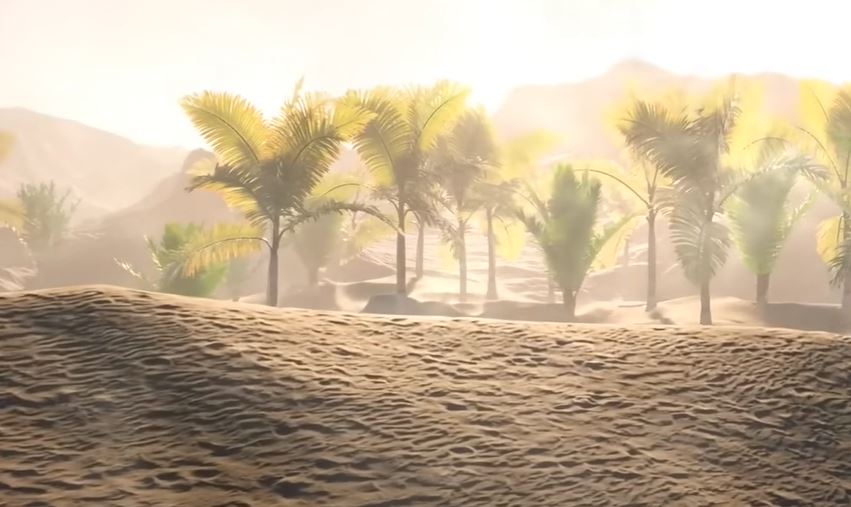
The Sahara desert is the largest hot desert in the world, spanning over 3.6 million square miles (9.4 million square kilometers) across northern Africa. It is also one of the harshest environments on Earth, with temperatures reaching up to 136°F (58°C) during the day and dropping below freezing at night. Despite these challenges, the Sahara has a rich history and unique ecosystem that make it a fascinating and important part of the world.
Geography and Climate
The Sahara is located in northern Africa, stretching from the Atlantic Ocean in the west to the Red Sea in the east. It covers most of Mauritania, Mali, Niger, Chad, Algeria, Libya, and Egypt, and parts of Tunisia and Sudan. The desert is bordered by the Sahel region to the south, which is a semi-arid zone that supports agriculture and pastoralism.
The Sahara is classified as a hot desert, with very little rainfall and high evaporation rates. Most areas receive less than 10 inches (250 mm) of rain per year, and some areas have gone decades without rain. The lack of vegetation and moisture makes the Sahara one of the driest places on Earth.
Despite its extreme conditions, the Sahara is home to a diverse array of plant and animal life. Some of the most notable species include the dromedary camel, the Barbary macaque, the sand cat, and the addax, a critically endangered antelope species. The desert also has several oases and other sources of water that support human settlements.
History and Culture
The Sahara has a long and fascinating history, with evidence of human habitation dating back tens of thousands of years. Some of the earliest known civilizations in the world, such as the Pharaonic kingdoms of Egypt and the ancient Berber tribes of North Africa, developed in and around the desert. These cultures developed unique traditions, languages, and art forms that have persisted to this day.
One of the most iconic features of the Sahara is its vast network of trade routes, which have connected North Africa with the rest of the world for thousands of years. The most famous of these routes is the Trans-Saharan trade route, which linked sub-Saharan Africa with the Mediterranean world. Caravans of camels and traders would cross the desert, transporting goods such as gold, salt, and slaves.
In addition to trade, the Sahara has played a key role in the spread of religion and culture throughout the world. Islam, for example, was introduced to North Africa through the Sahara by Arab traders and missionaries. Today, the region is predominantly Muslim, but there are also significant Christian and animist populations.
Challenges and Solutions
Despite its rich history and unique ecosystem, the Sahara is facing a number of challenges that threaten its sustainability and the well-being of its inhabitants. Climate change, desertification, and water scarcity are all major issues that are affecting the region.
One of the most pressing concerns is desertification, which is the process by which fertile land becomes desert. Desertification is caused by a combination of factors, including overgrazing, deforestation, and climate change. It is estimated that the Sahara is expanding southward at a rate of up to 30 miles (50 km) per year, displacing millions of people and disrupting ecosystems.
To address these challenges, a number of solutions are being proposed and implemented. One of the most promising approaches is to promote sustainable land management practices, such as agroforestry and water conservation. These methods aim to restore degraded land and increase the resilience of communities to climate change.
Another solution is to promote renewable energy sources, such as solar and wind power, which can help reduce the region’s reliance on fossil fuels and decrease greenhouse gas emissions. The Sahara has enormous potential for renewable energy, with abundant sunlight and wind resources that can be harnessed to provide clean energy for the region and beyond.
Furthermore, international efforts to address climate change are also important in protecting the Sahara and its inhabitants. The Paris Agreement, signed by nearly every country in the world in 2015, aims to limit global warming to well below 2°C above pre-industrial levels, with a goal of limiting warming to 1.5°C. This will require significant reductions in greenhouse gas emissions and increased investment in renewable energy and other low-carbon technologies.
Despite these challenges, the Sahara remains a vital and vibrant part of the world, with a rich cultural and ecological heritage. The people who call the desert home have developed unique and innovative ways to adapt to the harsh environment, and their knowledge and traditions are an important part of our shared human experience.
Visitors to the Sahara can experience its vast landscapes, stunning sunsets, and unique cultures. Many tour companies offer camel treks, desert safaris, and visits to ancient archaeological sites. Travelers should be aware of the risks associated with the extreme temperatures and lack of infrastructure in the region, and should take necessary precautions to ensure their safety.
In conclusion, the Sahara desert is a fascinating and important part of the world, with a rich history, unique ecosystem, and vibrant cultures. It faces significant challenges, including climate change, desertification, and water scarcity, but there are solutions being proposed and implemented to address these issues. By working together to protect this valuable resource, we can ensure that the Sahara continues to be a vital and vibrant part of our world for generations to come.